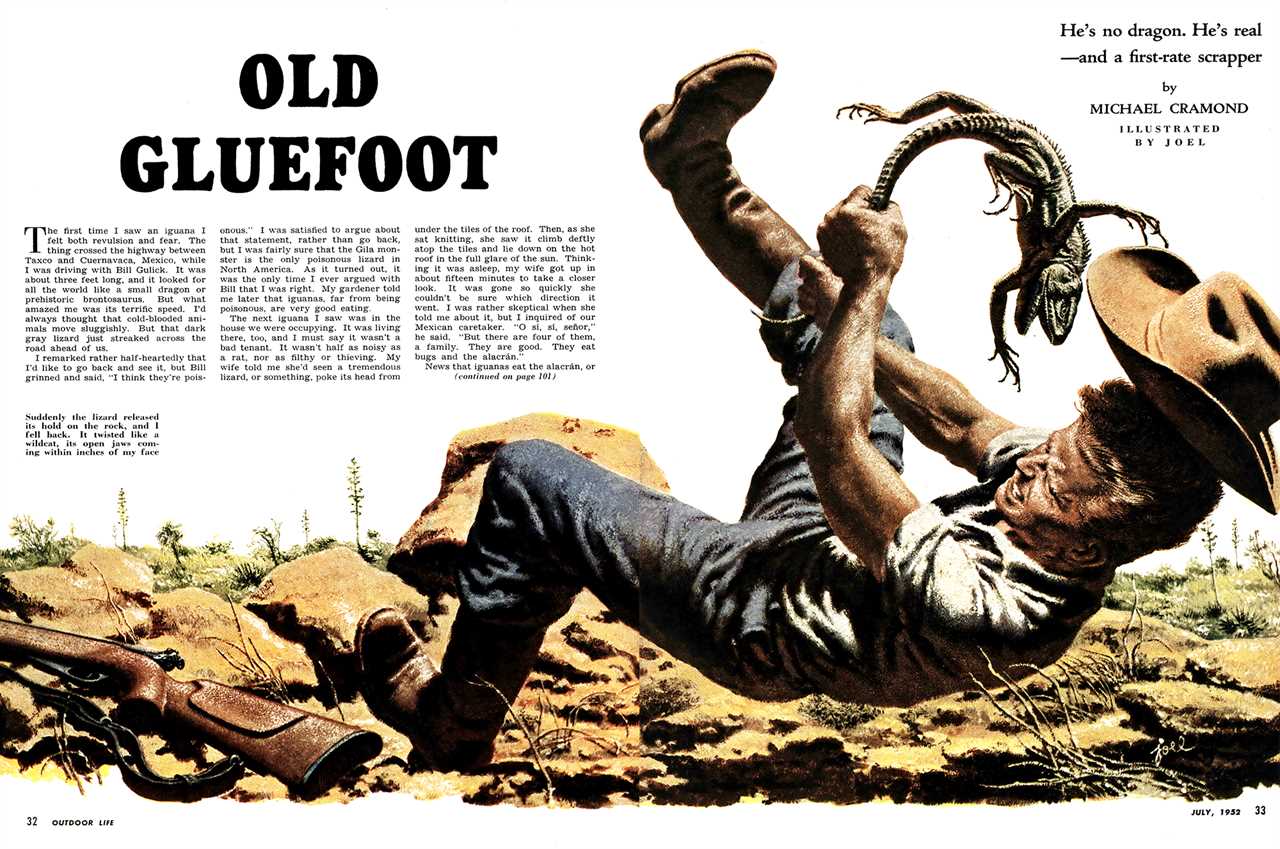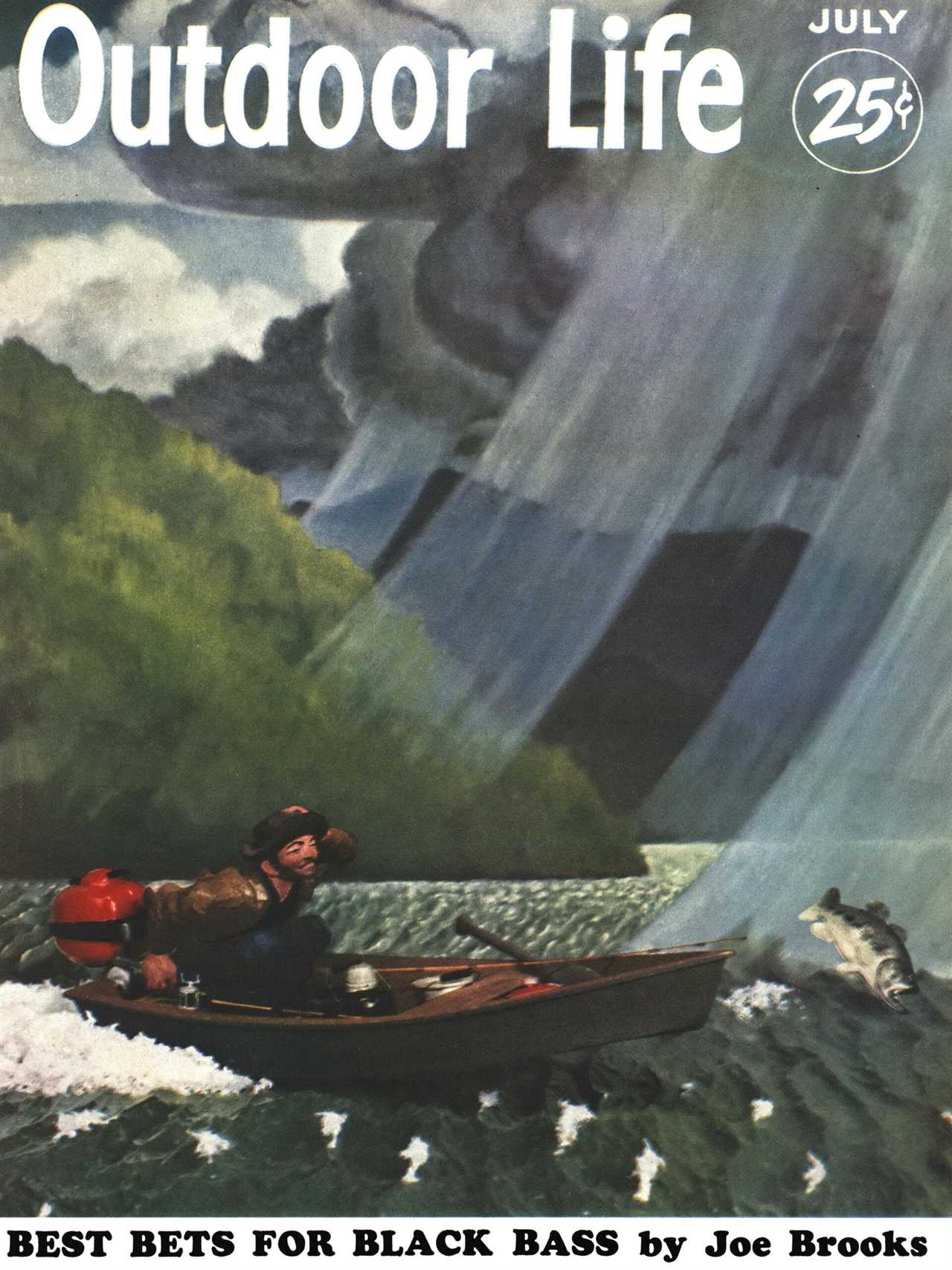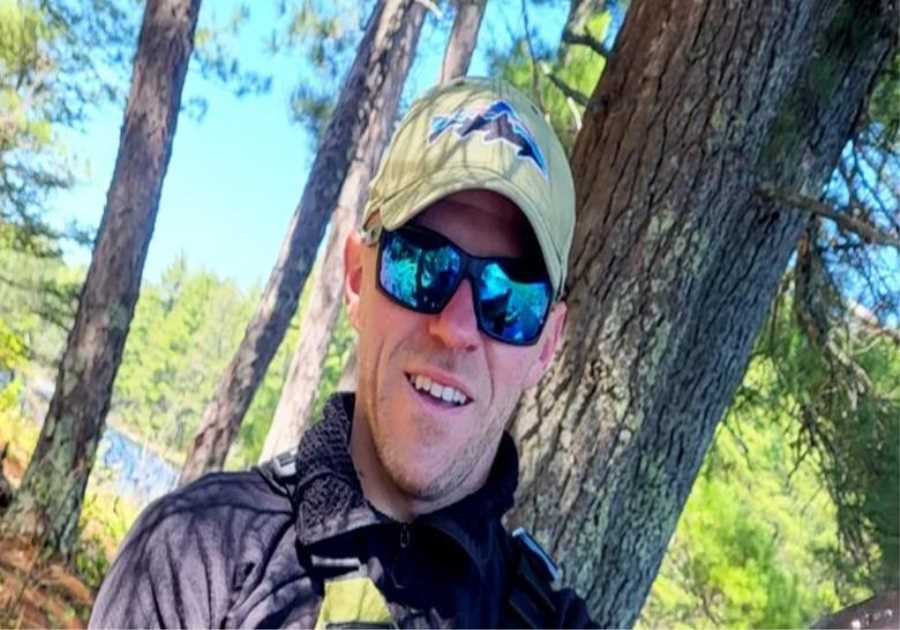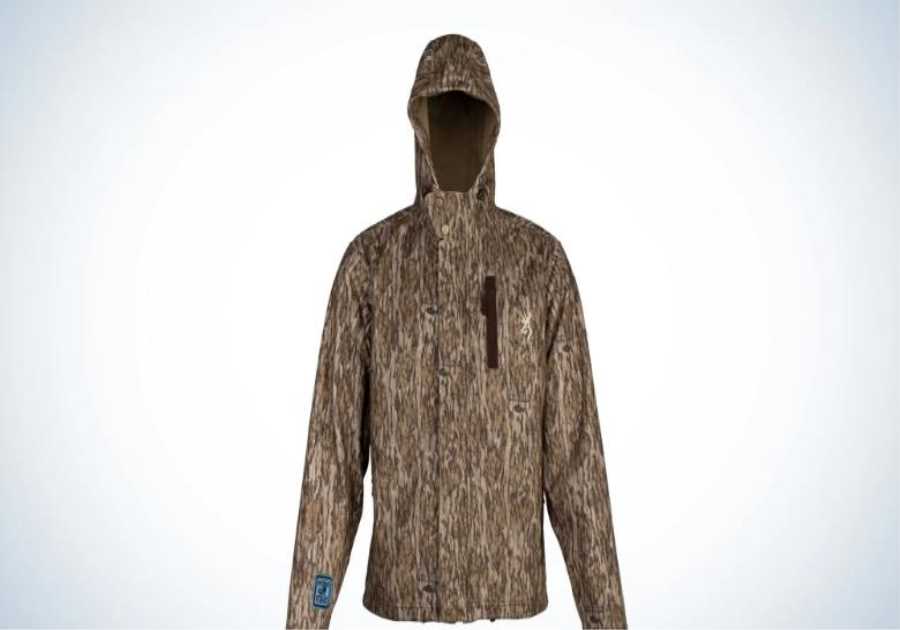||


This story, “Old Gluefoot” first ran in the July 1952 issue of Outdoor Life.
THE FIRST TIME I saw an iguana I felt both revulsion and fear. The thing crossed the highway between Taxco and Cuernavaca, Mexico, while I was driving with Bill Gulick. It was about three feet long, and it looked for all the world like a small dragon or prehistoric brontosaurus. But what amazed me was its terrific speed. I’d always thought that cold blooded animals move sluggishly. But that dark gray lizard just streaked across the road ahead of us.
I remarked rather half-heartedly that I’d like to go back and see it, but Bill grinned and said, “I think they’re poisonous.” I was satisfied to argue about that statement, rather than go back, but I was fairly sure that the Gila monster is the only poisonous lizard in North America. As it turned out, it was the only time I ever argued with Bill that I was right. My gardener told me later that iguanas, far from being poisonous, are very good eating.
The next iguana I saw was in the house we were occupying. It was living there, too, and I must say it wasn’t a bad tenant. It wasn’t half as noisy as a rat, nor as filthy or thieving. My wife told me she’d seen a tremendous lizard, or something, poke its head from under the tiles of the roof. Then, as she sat knitting, she saw it climb deftly atop the tiles and lie down on the hot roof in the full glare of the sun. Think ing it was asleep, my wife got up in about fifteen minutes to take a closer look. It was gone so quickly she couldn’t be sure which direction it went. I was rather skeptical when she told me about it, but I inquired of our Mexican caretaker. “O sí, sí, señor,” he said. “But there are four of them, a family. They are good. They eat bugs and the alacrán.”
News that iguanas eat the alacrán, or scorpion, was heartening because that was the only critter we feared in Mexico. I looked more kindly upon iguanas from there on, but I was surprised to find that they feed not only on bugs, birds, and chickens, but also upon leaves. They are of the genus Ctenosaura, near relatives of the harmless horned toad and the harmful Gila monster, and are fairly common all over Mexico.
After we’d been in the house a month or so the iguana family became more used to us, but nowhere near tame. Even at the end of three months a sudden movement would send them scurrying off the roof into the tiles. Their eyes were keen enough to see a person fifty yards away.
Not long after we’d been living at Lago Tequesquitengo I noticed a lot of hunters coming down weekends from Mexico City, and I asked what they were after. They told me they hunted rabbits, doves, and iguanas. They said they considered the iguana a more wily creature than the other two and, therefore, harder to take. They also told me that the iguana could bite like the devil, and often did. I began to get interested.
I was fishing for white bass with Señor Beichler one day when I heard a loud commotion on a cliff above us.
“Bueno! Iguana grande,” he said.
A gray-black streak sped up the sheer cliff as if it were running full tilt on level ground. It was big, all right; it seemed huge. In response to my questions, my host told me that he’d often hunted iguana with a rifle or a shotgun, that they were good game, sometimes grew four feet long, and were delicious eating. In Veracruz and Acapulco iguana meat is sold in the markets, he told me, and the skins are prized for shoes and purses. My interest quickened.
Shortly after that I had a good look at a big buck iguana that moved into our roof. He seemed to be as heavy as a big rabbit and, on short distances, twice as fast. His body was gun-metal black with a yellowish underbelly, and his skin had quite a distinctive geometric pattern on it. A few days later José Larenas suggested I take one of his .22 rifles and go with him on an iguana hunt. I accepted eagerly.
We hiked across a couple of miles of cactus and mescal-covered country to a deep canyon that split the plain. José explained that iguanas love to hide and sun themselves in the cracks and fissures of the canyon. They also like the lush growth and the water at the bottom of the canyon, since many birds live there.
José saw the first two iguanas. He put the second one down with a fast shot to the head. I picked it up gingerly when it stopped kicking. It was about two feet from nose to tail, and about the ugliest North American game animal I ever saw. It hefted about the same as a good rabbit, and had hooked claws and sharp teeth that looked much like those of a wildcat.
I drifted up the canyon ahead of José, who had turned his attention to some doves that had alighted in nearby trees. It was hard going. Thorn bushes plucked at my jeans, and I got stabbed in the thigh with mescal and maguey cactus. In a little while I looked up into a tree about fifty yards away. I thought I had heard a bird rustling the dry branches, and was hoping that José had put the doves up my way. But all I could make out was a dead branch lying in a crotch of the tree. I took a step forward. The “dead” branch moved, and I saw that it had a big, ugly head. An iguana!
I brought up my .22 rifle and sighted on the head. That was as far as I got. The iguana just fell out of the tree, but when it hit the dusty ground it ran like a scared rabbit. I chuckled to myself, thinking what a stupid animal the iguana must be. So clumsy it just fell out of the tree. José’s gun cracked below me, and I saw a dove drift down in a puff of feathers. I was still grinning about the iguana when José came up. I told him about the big lizard falling out of the tree when it saw me put up my gun.
“Caramba, hombre,” he laughed, a patient look coming over his brown features. “Iguanas always fall out of trees. They are very smart. It does not hurt them, and is the quickest way down. No?”.
No? Yes! A guy needs to know a few things like that to give him the right perspective. Well, I don’t need to have a house fall on me. An iguana is enough. The next half hour showed me that iguanas are very smart indeed. A falling pebble was enough to start a quick rustle in the crannies above us. I began to get the idea, and to piece things together as I would when hunting deer.
I REMEMBERED the habits of the iguanas in our house. They fed in early morning. Then, when the sun was high, they crawled out on the scorching tiles, and baked. Being cold-blooded animals, they liked the heat of the day. They didn’t move then. So, out here on the plain, the iguanas would be soaking up the blazing rays on big rocks, or on the rugged ledges above us, close to boulders or cracks into which they could dive in the event of danger.
José’s eyes were alert to them. He pointed out a big iguana about thirty yards away. I couldn’t distinguish it from the rock ledge upon which it rested. José put his hand on my arm for silence, and as quick as a boxer’s feint he whipped up his rifle and pulled the trigger. There was a scramble on the ledge, and I saw the big lizard thrashing around. Suddenly it tumbled over the ledge. It caught its front feet about two feet down the cliff and hung there. I thought José would shoot again, but he started to walk forward.
“Better put another shot into it, José,” I suggested.
“He’s dead,” he said.
I didn’t think so. The animal was hanging to the perpendicular, almost smooth face of the rock, and I didn’t think anything dead could possibly hang on so tenaciously. I followed José up the cliff. The iguana hung perfectly still, but I expected it to spurt up the cliff any minute. José looked at the animal, leaned his rifle against a thorn bush, and picked up a rock. He pegged the stone at the cliff, but the iguana didn’t move. He tossed another one which dislodged the animal’s front legs. Then it came down and hit the ground with a dull plop.
JOSE PICKED IT UP, and examined the bullet hole in the head. Then, for my benefit, he took the lizard by the head, placed it on the smooth, vertical sur face, and removed his hand. The animal clung to the wall as if it were alive.
José grinned.
“Killing an iguana is but half the hunting,” he said. “Notice their claws. They’re sharp and hooked like those of a hawk. When a weight is put upon them they are so arranged that they cling. Mary times I’ve wasted half a box of shells shooting a dead iguana down from the face of a cliff or a tree. They hang like glue.”
I looked closely at the backward-curving claws. They were needle-pointed, about the size of those of a bobcat, four front and one inclined back, and were custom-designed for the flashing climb I’d seen many iguanas make up the rocky clefts.
“He’s quite a gluefoot,” I said to José.
He grinned. “You can have all I shoot,” he said. “If I take them home, my wife will want a pair of shoes made.”
I thanked him for the offer, but I told him I’d like to get my own iguanas. I suggested going on up the canyon. José demurred. It was the hour of siesta, and he wanted to nap. So saying, he leaned his back comfortably against the cliff face and tilted his sombrero over his eyes. I smiled and walked slowly up the canyon.
The sun was beating up the pulse in my forehead, and my lips were dry and dusty when I came around a sharp turn. It looked like a good spot for iguanas. The rocks jutted into the glaring light. There wasn’t a leaf of shade. I sat on a big rock and examined the face of the cliff ahead of me.
I realized it wasn’t my wounded iguana! This one was fresh as a daisy, but very, very angry.
It seemed logical to sit there and scan each ledge until I was sure there wasn’t a big lizard sunning itself in front of my eyes. After twenty minutes, this close scrutiny paid off. On a ledge about fifty feet away I saw the form of a head facing toward the sun. I watched it until it moved slightly. Then I worked my rifle up to my shoulder and slowly drew a bead on the head.
Just as I had the squeeze almost completed the lizard reared up and twisted quickly. I waited a fraction of a second for it to turn back. I was too late. The animal zoomed up the sheer rock like a skyrocket. When it was near the summit I leveled on a running shot and fired. The iguana rolled backward and tumbled to the ledge on which it had been resting. It thrashed around like a miniature alligator, then fell the rest of the way and hit the ground with a thud.
Walking up to it gingerly, I saw a puncture just behind the head where the shot had broken the spine. Even then I was leery about picking the thing up, so first I banged it on the head with a rock, to make sure it was done for. Frankly, I’m no more cagy about walking up to a grizzly or a moose I’ve put down than I was about approaching that iguana.
I edged farther into the canyon. I saw two more iguanas, but they saw me first, and my snapshooting wasn’t good enough to take them. A brace of doves flitted by on the still air. They settled in a tree well out of range. I glanced up the rocky wall, searched its projecting ledges, and looked carefully in the branches of all the surrounding trees.
I was about to get up and move along when I noticed, about sixty yards away, what looked like a deep, black fissure in a volcanic boulder. It was in the form of an iguana. There was a pile of boulders nearby into which an iguana could quickly disappear. I leveled the gunsights on the form and squeezed off. A big lizard toppled off the rock and made for the boulders. It ran into a dark cranny. It looked to be almost three feet long—the biggest I’d seen that day. I moved quietly to the rocks, hoping to see its dead body.
AS I CIRCLED the pile I spotted what A looked like a dead twig sticking out between two boulders. Suddenly the twig twitched. It was the tail of an iguana. I sneaked up to it, and grabbed. The tail gave a terrific tug, surprisingly strong and abrupt for what I hoped was a badly wounded iguana. Or could this be another one—unharmed ? My belly did a flip at the thought. I was holding onto a big hunk of tail, and by the sound of the scratching of claws among the rocks it was clear that its owner was no baby. Since my rifle was useless I dropped it to the ground and gave the tail a big yank with both my hands. The lizard dragged out about six inches, then dug in with all four feet. I was about to yank again when my eyes caught sight of a big grayish head turned back, jaws wide open, look ing right into my face. I felt as if an icicle had been rammed into me.
I looked over the rest of that ugly body and realized there was no blood on it. It wasn’t my wounded iguana! This one was fresh as a daisy, but very, very angry. “I’ll give a good yank, flip it over my shoulder, and bang its head on a rock.” That’s what I thought.
Suddenly the lizard released his gluelike hold on the rock. My foot slipped and I fell back hard on my butt, still holding the iguana by the tail. It twisted like a wildcat, its open jaws coming within inches of my face. I pushed myself to my feet as the animal’s claws raked my arm, and with a desperate twist I swung it against the big boulder. It kicked savagely. I swung again and again. Then I realized that it was either stunned or dead. I dropped it. It was a real beauty.
I rested for a minute, then picked up the iguana I’d shot earlier in the day and the one I’d wrestled and started past the rock pile. Suddenly I noticed something twitching between the boulders—the iguana I’d shot only a little while before. It was dead. When the nerve twitching stopped I picked it up and started proudly down the canyon with my three ugly trophies.
José roused himself at my footsteps. I nonchalantly dangled the three lizards in front of him. He whistled.
“You got two big ones,” he exclaimed. “Not many that big around here. Let me look at the skins.”
He examined them closely, and repeatedly turned over the one I’d caught by the tail.
“Where did you shoot this?” he asked.
“Oh,” I said, kind of offhand, “I just stalked him, and got him with my hands.”
José’s eyes opened wide. But he looked again for a bullet hole. “You must be very quick, Miguel,” he allowed. “You hunt him maybe the same way you hunt grizzly bears. No?”
There didn’t seem to be any answer to that one.

I had some misgivings when I took the lizards home. José said to be sure to salt and sun-cure the skins, and left definite instructions with my wife on the correct Mexican manner of cooking iguana fillets.
José was barely out of the house when Thelma turned to me and said, “Don’t you dare bring that filthy rep tile meat into this house. I’ll throw out the pots and pans if you put any of it in them.”
Frankly I felt somewhat the same, but after a while I went outdoors, picked up the big iguanas, and began to skin them. As I worked I was surprised to see how clean they were. The skin was tough as leather, but the flesh looked and felt exactly like spring chicken. And there was no odor from the critter’s innards.
The meat, when cleaned, was firm and fresh-looking and had little lines and patches of golden fat on it. I was getting up my nerve to eat it. I decided to put it in the icebox and ask the gardener’s wife to cook some for me in exchange for the rest of the meat.
Next day my wife noticed the fillets and asked where the rabbit had come from. I told her that while she was out shopping one of our friends had been hunting and had brought us a couple of rabbits. “How nice!” she said, “Would you like it deep-fried for supper? I just feel like some wild rabbit.”
I nodded, pretending to be preoccupied with my writing.
That night we had one of the most delicious dinners my wife has ever prepared. She served the fillets covered with fresh pineapple, had baked potatoes, fried rice, and avocado pear salad. The meat was wonderful—as tender as plump young chicken. My wife nodded her approval.
“Lovely rabbit,” she smiled.
I’m afraid I was a little rude. Some thing caught in my throat, and I sneezed. Thelma eyed me suspiciously.
“Where did you bury those iguanas?” she asked abruptly. I fumbled. She started to laugh. “You—well, you darling damn fool. I might have known it. But they were good. When are you having my shoes made up out of the skins?”
I shot iguanas again and found them well worthy of being called game. I suggest you try it sometime. You’ll find it great sport.
Read more OL+ stories.
The post Hunting Iguanas in Old Mexico, a Story From the Archives appeared first on Outdoor Life.
||-------------------------------------
By: Michael Cramond
Title: Hunting Iguanas in Old Mexico, a Story From the Archives
Sourced From: www.outdoorlife.com/hunting/hunting-iguanas-mexico-archives/
Published Date: Wed, 21 Sep 2022 15:30:00 +0000
Did you miss our previous article...
https://playeverysport.com/recreational-sports/bowhunter-tags-a-225inch-monster-buck-on-vermejo-ranch
.png)





